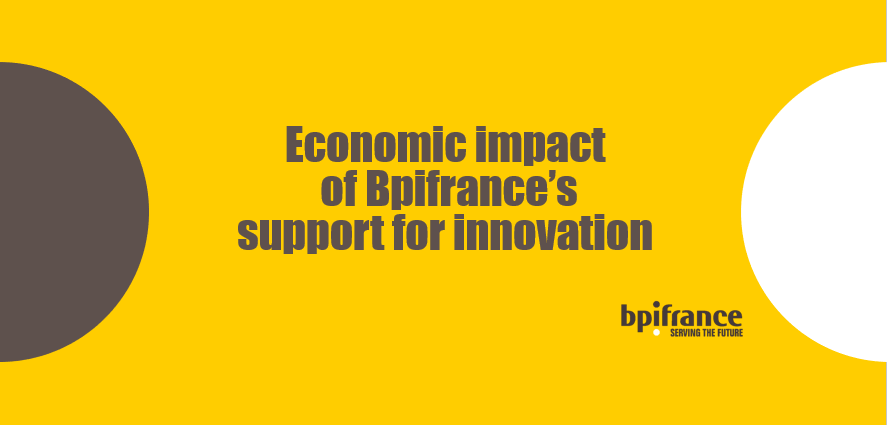Economic impact of Bpifrance’s support for innovation
Two studies estimate the impact of Bpifrance’s support for innovation on R&D expenditure, jobs and growth in SMEs and Midcaps. These studies evaluate the economic impact of Bpifrance’s support for innovation, studying the impact in two different contexts: companies initiating innovation projects on their own behalf, and companies joining collaborative innovation projects. Bpifrance committed to supporting SMEs’ innovation: what are the results? The studies reveal 4 different aspects,…

Two studies estimate the impact of Bpifrance’s support for innovation on R&D expenditure, jobs and growth in SMEs and Midcaps.
These studies evaluate the economic impact of Bpifrance’s support for innovation, studying the impact in two different contexts: companies initiating innovation projects on their own behalf, and companies joining collaborative innovation projects.
Bpifrance committed to supporting SMEs’ innovation: what are the results?
The studies reveal 4 different aspects, showing that this support for innovation is a significant help for SMEs and Midcaps.
- Bpifrance’s individual aid for innovation boosts R&D and innovation expenditures in micro-enterprises and in SMEs. On average, they spend €84k more than counterfactual companies in these activities.
- Investments in R&D and innovation results in an employment increase in the first year, especially R&D jobs, and a rise in revenue after 3 years. It represents €280K more after 3 years, among which €80K are export revenues.
- Support for collaborative projects has an impact on privately sourced R&D spending in SMEs and Midcaps. It represents €294K in additional R&D expenditures.
- This same kind of support stimulates employment in R&D activities (+ 1.9 job every year), as well as investments in this same sector (€112K of additional R&D spending every year). It also helps to increase the number of patents filed by SMEs and Midcaps benefiting from this support (with a maximum effect of + 1.5 patents filed each year).
How were made these studies?
The studies rely on 15 years of data on innovation support activities from 2005 to 2018, corresponding to 60,000 innovation projects for individual aid for innovation, and 2,000 others for the collaborative projects. Statistical data, found on the INSEE data hub (CASD), were also used for these studies.
The first study about individual aid for innovation was made by an economist from the Bpifrance Evaluation Department, and France Stratégie.
The second study about collaborative projects was conducted by economists from the French Center for Research in Economics and Statistics (CREST) and the Directorate General for Entreprise (which belongs to the French government).
Both were conducted under the supervision of members from the French Treasury, the DG for Enterprise, France Stratégie, the Bank of France and professors coming from independent universities.
Find the whole report below.
Related
Trending

